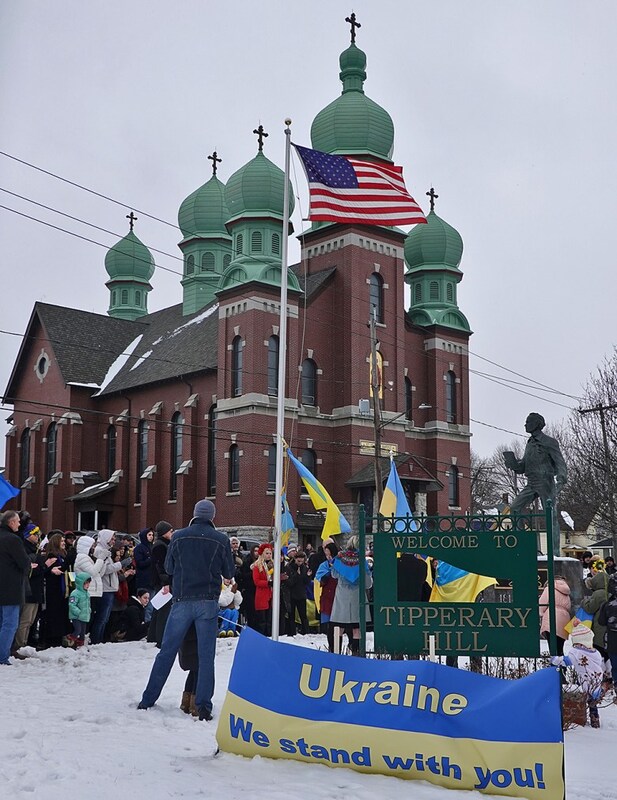Syracuse, NY
This exhibit, originally hosted in Syracuse, New York, demonstrated the ties between the work done by libraries in Ukraine and the Ukrainian-American community in Syracuse.
Thousands of miles from Ukraine itself, Syracuse, New York hosts a significant and thriving Ukrainian community dating back more than a century. The exact date of the first arrival of Ukrainians in Syracuse is not known, but by 1885, there were several Ukrainian families living in Syracuse. Early immigrants helped to build Syracuse, working in steel and wire mills, foundries, factories, and railroads. New York has the highest Ukrainian population of any state, and the Syracuse metro area is tied with Utica for the highest concentration of Ukrainians among all New York metro areas. Today, Syracuse.com reports that there are 7,000 Ukrainians in Syracuse, though exact numbers vary depending on who you ask (Syracuse.com). The Ukrainian Churches and Ukrainian Cultural Centers have become social centers for all of the West end, made available to non-Ukrainian neighbors for meetings and other recreational programs (Ukrainian National Home). When the war began, the UNH led the effort to gather donations of supplies, but ran out within weeks because they had run out of storage space. One member called this outpouring of support an “unsurprising act of unity and love from a city with a history like Syracuse” (Ready CNY).
Like libraries in Ukraine during the war, the Ukrainian National Home has served to safeguard, protect, and transmit Ukrainian culture even from across an ocean. They run the Odesa Ukrainian Dance Ensemble, the Poppies Ukrainian Gift Shop, the VORONY Traditional Ukrainian Orchestra, and the SURMA Men’s Choir, among other programs (Ukrainian National Home). In addition, they run the Lesia Ukrainka School of Ukrainian Studies, which teaches children the Ukrainian language and other aspects of their Ukrainian heritage. They state that their “current goal is to not only to have the School of Ukrainian Studies, but also to continually replenish it with new students because it is the keeper of the living spirit of Ukraine in every generation, everywhere and in everything” (Ukrainian Cultural Center). Despite the severe threats posed by the war, organizations from Ukraine to Syracuse are working hard to safeguard Ukrainian culture and adapt to new challenges.
